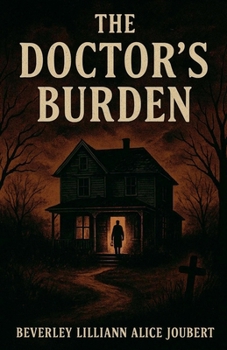The Doctor's Burden
In the drought-stricken Karoo town of Willowmore, a century-old legend still casts its shadow. Dr. Pieter Vos, the district surgeon during the Spanish flu of 1918, lost his wife, unborn child, and countless patients before vanishing without a trace. Locals whispered that he was cursed, doomed to knock on doors where death would soon follow. They called him both healer and harbinger - a man unable to lay down his burden even after death.
Decades later, Zara Vos returns to Willowmore to care for her ailing mother, Annelise. The town greets her not with warmth but with watchful eyes and hushed warnings. Her family name still carries weight, and not the good kind. Strange things begin almost at once: her mother insists the doctor has been visiting, neighbors speak of hearing "the knock," and Zara smells the sharp, ghostly scent of camphor and carbolic soap whenever illness appears.
When she discovers her great-grandfather's doctor's bag and journal hidden in the attic, Zara unravels a story darker than folklore. The journal's entries begin clinically but soon spiral into confession: the doctor could not cure the flu, only carry the names of the dead, a burden that tethered him to Willowmore. Alongside the journal, Zara finds a hand-drawn map marked with thirteen homes - her family residence among them. Each marked house has its own tragic history, tied to fever, knocks, and whispered goodbyes.
As illness begins to spread again through the town, the haunting escalates. Zara meets Daniel Lategan, a bookish archivist who helps her uncover official letters, town records, and grave markers from 1918. Together they piece together the truth: Pieter isolated Willowmore during the outbreak, creating his own quarantine. When he failed to save his wife and unborn child, grief and guilt consumed him. Whether through curse, vow, or sheer refusal to rest, his spirit has kept returning - carrying lantern, journal, and the sound of three knocks - to bear witness to every sickness since.
The haunting grows personal. Annelise's health falters, blurring the line between dementia and ghostly visitations. Zara realizes the haunting is bound to blood as well as town: her family carries the unfinished bargain the doctor made when he tried to trade his life for others. When Zara finally comes face-to-face with her ancestor's ghost in the abandoned clinic, he offers her a vial marked with the spiral symbol carved into the circle of graves. It contains "choice" - not his, but Lena's, the wife he could not save.
Haunted by visions of Lena and confronted with the doctor's despair, Zara chooses to shatter the vial, breaking the endless cycle of rounds. In that moment, the haunting ceases. The fever that swept Willowmore lifts. Pieter's spirit and Lena's finally rest. The town breathes again.
But Zara's journey does not end with silence. She accepts her inheritance not as a curse but as memory: to carry stories, not sickness; to honor the doctor's burden without repeating it. The house is no longer haunted, but filled with presence. Willowmore, too, begins to heal, whispering a new story: that the doctor was not a monster, but a man who could not stop caring.





